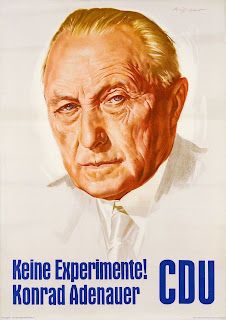Climate Laggards
By: Mike Doyle, President, CAGC
201 January Recorder article. Can also be found here: https://www.cagc.ca/index.php?DP=recorder_articles
201 January Recorder article. Can also be found here: https://www.cagc.ca/index.php?DP=recorder_articles
Here we go. Change is coming to both Alberta and to
Canada. Personally I do not see how improving our perception in the world with
relation to climate change will help us get access to markets – i.e. pipelines.
Keystone nixed by Obama; Northern Gateway running up against an “official”
moratorium on tanker traffic off the northern West Coast of BC (conveniently ignore the super tankers that
come down from Alaska every day about 50 miles off the coast); and some poll done
by the ENGO’s that say 60 % of people in Quebec are against Energy East. So
forgive me for being skeptical. The recent Alberta measures will; cost us about
$3 billion dollars. We will reduce GHG’s marginally and hopefully begin to
change consumer behaviour (i.e. drive less). Canada makes up less than 2 % of
global GHG’s. China, already the world’s larger emitter around 25 %, has agreed
to ONLY double their emissions by 2030. India said they would ONLY triple their
emissions by 2030. And we are climate laggards……..?
The Roughneck - November 2015 - Natural Gas Is
Coal’s Only Real Alternative – Gywn Morgan courtesy of Troy Media
(www.troymedia.com)
The fastest growing source of global greenhouse gas
emissions is the burning of coal to produce electricity. The most often touted
“renewable” power sources are wind and solar even after both technologies have
proven unaffordable and unreliable.
Here in Canada, former Ontario Premier Dalton
McGuinty’s plan to replace coal-fired power plants with highly subsidized wind
and solar transformed Ontario from one of North America’s lowest power cost
jurisdictions to one of the highest, driving manufacturing jobs south of the
border and overseas.
In Britain, outraged consumers demanded an end to
(US) $700 million per year in wind power subsidies that produce less than 0.5
percent of demand. But the country where so-called green energy has been the
biggest disaster is Merkel’s Germany, where some (US)$140 billion was given to
solar power companies that generated a meagre 4 percent of electricity supply.
The subsidies were pulled back after the minster of Economics called them “a
threat to the economy.”
Taken together, after hundreds of billions of
investment, wind and solar power constitutes a tiny, and unreliable, source of
electricity. As if that reality isn’t enough to stretch the credibility of the
G7 “decarbonisation” declaration, an OXFAM study prepared ahead of upcoming
climate talks reveals that Britain, Germany, Italy, Japan and France G7
increased coal burning by 16 percent between 2009 and 2013. Only Canada and the
U.S. reduced coal consumption over that period.
Meanwhile, coal burning has skyrocketed in
developing countries, most notably in China and India where almost
three-quarters of global coal is burned. Even after Chinese President Xi
Jinping and U.S. President Barack Obama touted their climate change pact in
late 2014, China continued to commission a new coal-fired plant almost every
week.
A pretty bleak picture, but there is another fuel
that can make a gigantic strides in reducing emissions. By switching from coal
to natural gas power generation, CO2 emissions are cut nearly in half and toxic
particulates and NOX are eliminated. Advancements in hydraulic fracturing
technology unlocking gas trapped in shale formations is the main reason why
U.S. coal use has fallen. There are vast amounts of untapped shale gas
resources around the world.
The other big challenge for “decarbonisation”
zealots is transportation. Replacing gasoline-fuelled cars with electric would
require huge additions to power generation capacity, much of which would be
generated by fossil fuels.
What about diesel-fuelled heavy transportation?
Here again, natural gas comes to the rescue. Conversion of diesel engines to
natural gas is a long-proven technology. The U.S. has already created long haul
“natural gas highway” routes with filling stations for transport trucks. Here
in Canada, CN Rail locomotives and B.C. ferries are being converted from diesel
to natural gas. And, as we are learning from the Volkswagen scandal, diesel
engines produce toxic NOX and volatile organic compounds not emitted from
natural gas engines.
Rather than following a doomed decarbonisation pipe
dream, natural gas offers an enormous opportunity for a cleaner atmosphere
long, long before 2100. Galileo would rejoice.
The best argument
against democracy is a five-minute conversation with the average voter.
Winston
Churchill

Comments
Post a Comment